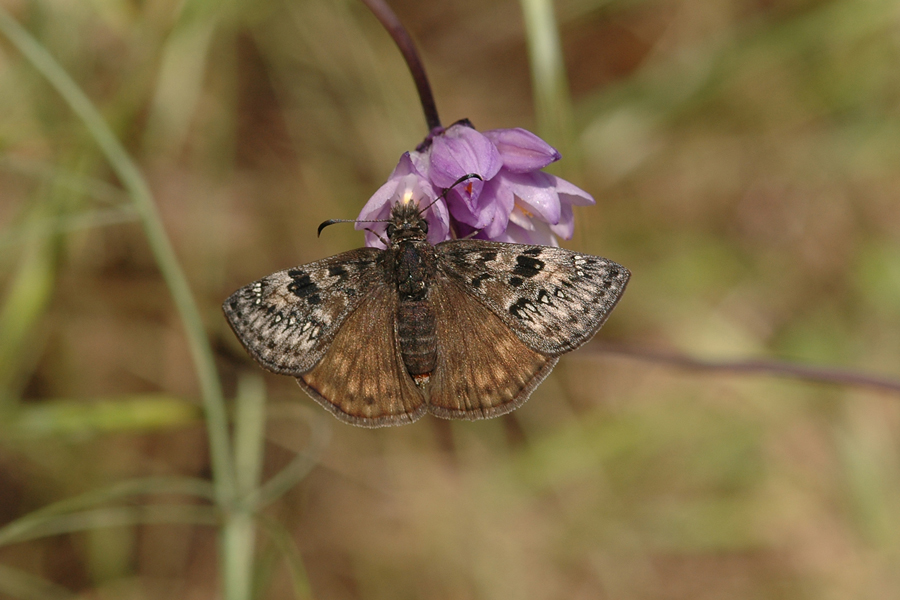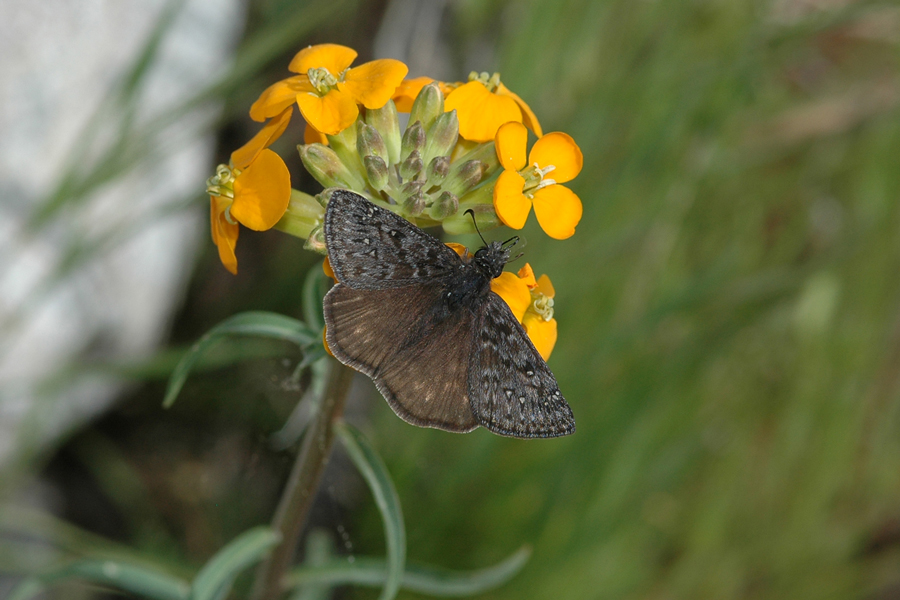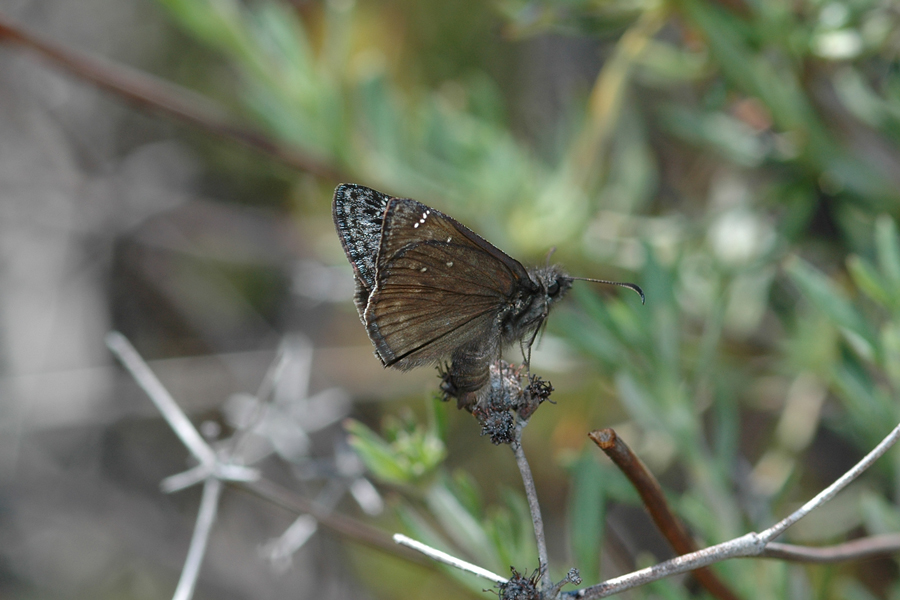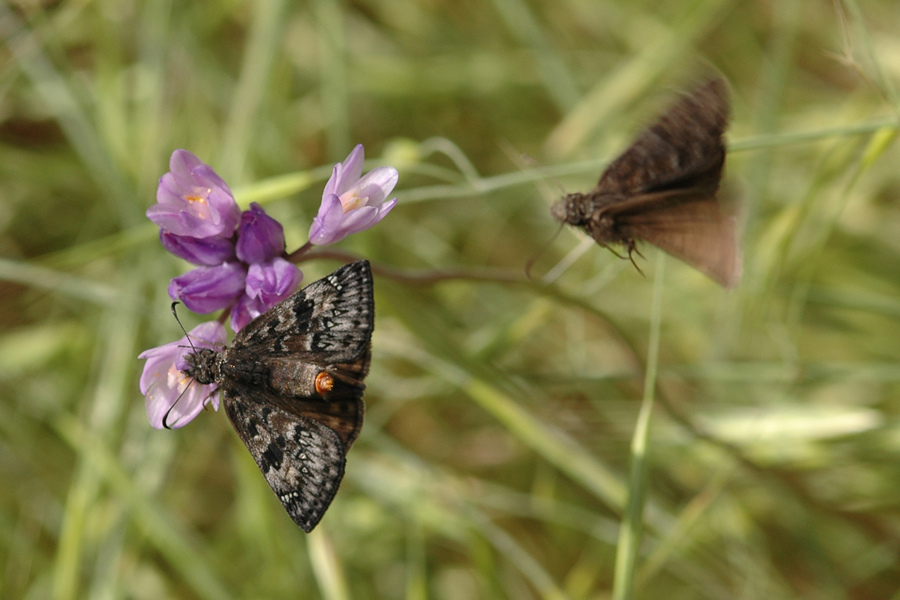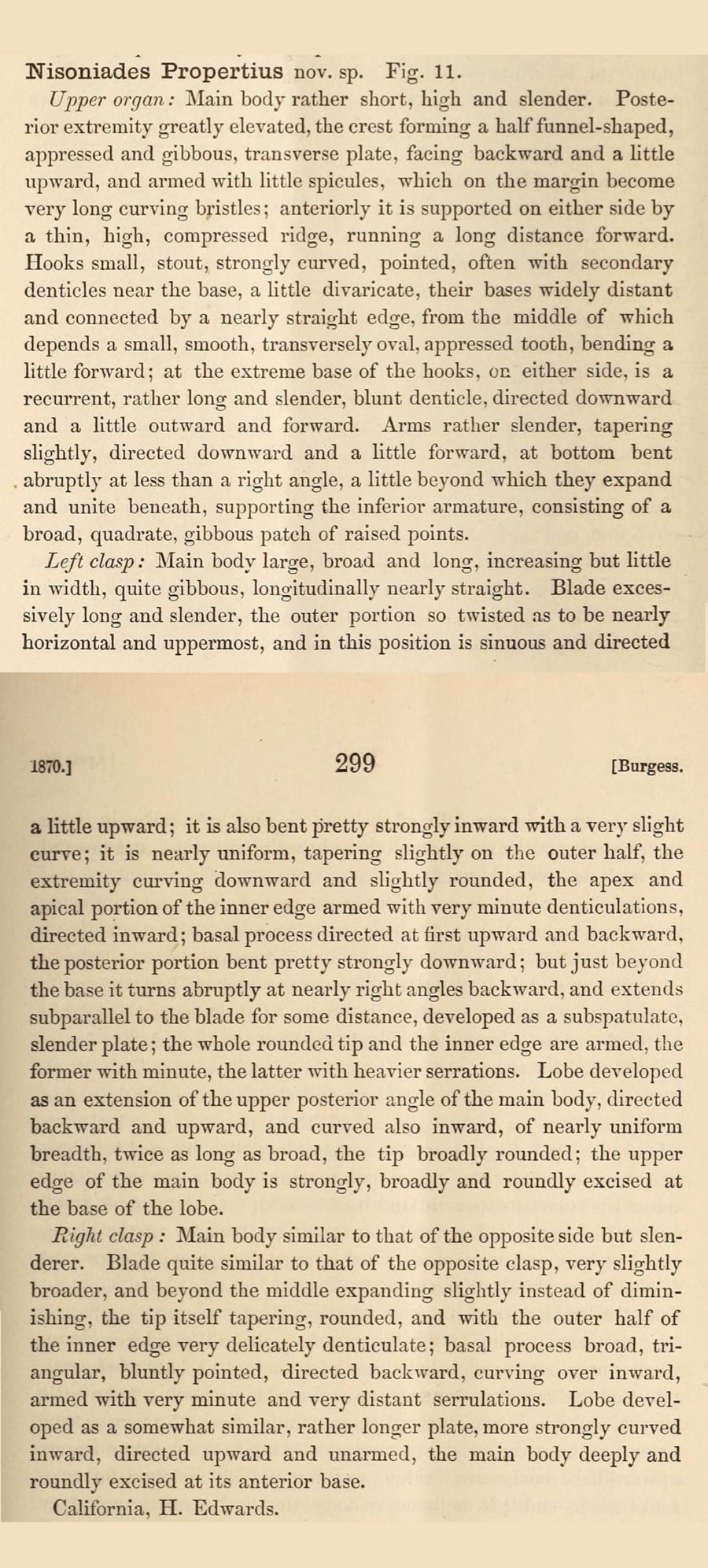Gesta propertius
Propertius Duskywing
The Propertius duskywing is widespread in the mountains of the western half of southern California, and it ranges north into Canada. If you hike through oak habitats around Big Bear or in the San Gabriels late in the spring or early in the summer, you're probably going to see more than one of these. It's not difficult to identify. The hind wing fringe is brown, not white, for starters. Look for the heavily-contrasted mottling on the dorsal forewing, with black markings against both light tan and medium brown colors. Also, the rich brown of the hind wings is relatively uniform and bears little relation to the fore wing coloration. Size-wise, these are notably larger than afranius. Only pacuvius is similar in most of southern California. But Pacuvius males are very dark, and the females lack the well-defined, pointed black outline of the hyaline spots on forewing. Finally, it may help to know that pacuvius uses species of Ceanothus as their larval food plant, while propertius uses oak trees.
Propertius duskywings are said to fly in a single brood, starting in the spring and extending to early summer (I haven't reared them). Their larvae feed on the leaves of oak trees; in our area they seem to prefer Coast live oak (Quercus agrifolia). You may notice that of the nine species of duskywings in my southern California list, five use only oaks.
